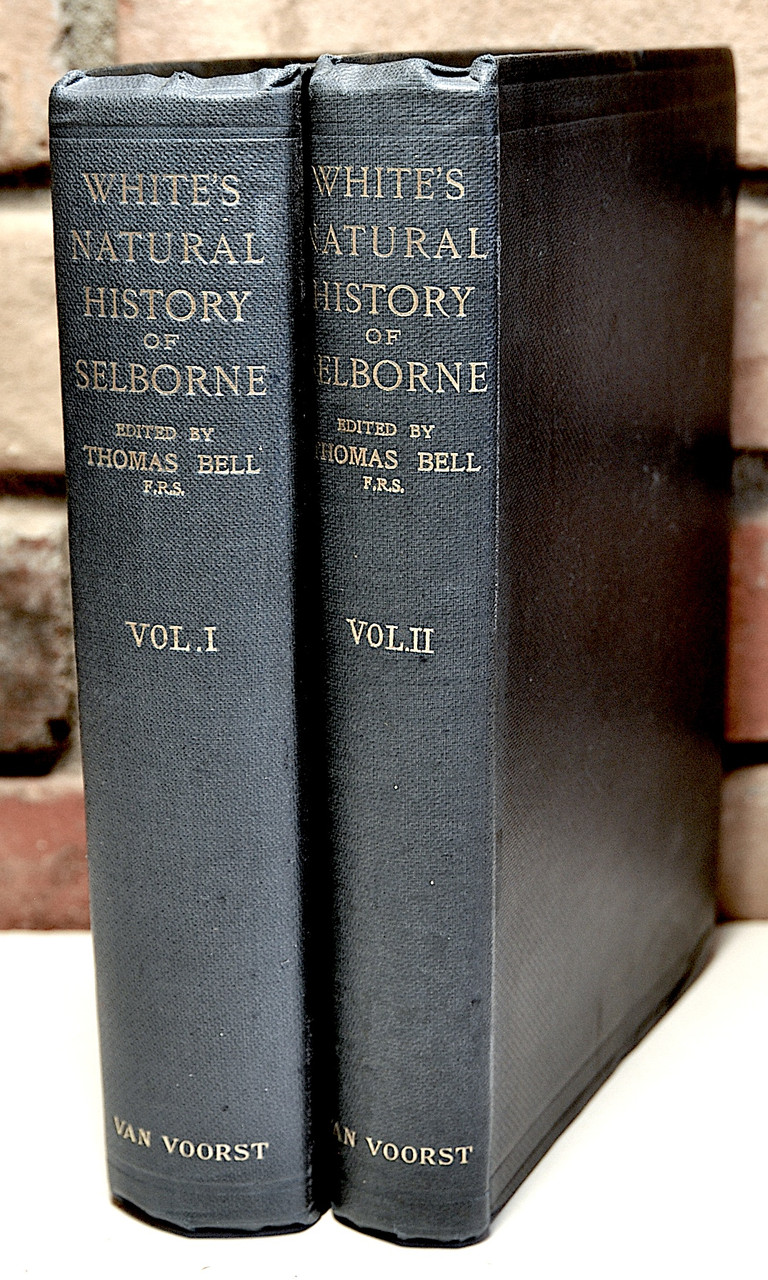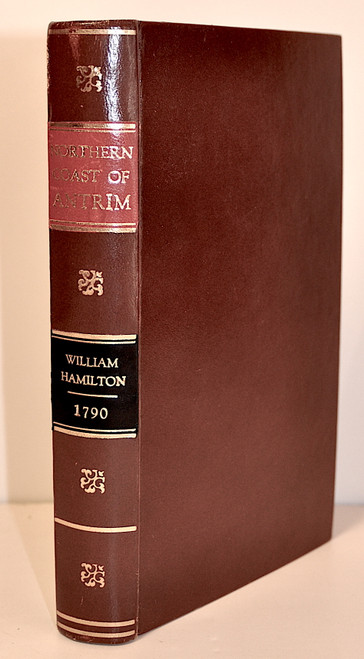White, Rev. Gilbert, edited by Thomas Bell; The Natural History and Antiquities of Selborne, in the County of Southampton. By the late Rev.Gilbert White, formerly Fellow of Oriel College Oxford. Edited by Thomas Bell,F.R.S.,F.L.S.,F.G.S &c., Professor of Zoology in Kings College London. Two volumes, London: John Van Voorst, 1 Paternoster Row, 1877. Quarto, vol. 1, pp. half title, lix, 507, 2 (ads), frontispiece, 7 illustrations. Vol. 2, pp. half title, 410, frontispiece, 5 illustrations.
The set is complete and in the original blue cloth with gilt spine titles. The bindings are tight and very clean, text is very clean with minor toning or spotting to first end sheet. Inscribed on end sheet “Rea Falcon from Uncle Fred Xmas 1904”. A near fine set.
Gilbert White (1720-1793) was a pioneering English naturalist who influenced many of England’s scientists including Charles Darwin. Darwin once commented that he had stood on the shoulders of Gilbert White. When asked in 1870 about books that had deeply impressed him in his youth, Darwin mentioned White's writings. White is best known for his Natural History and Antiquities of Selborne (1789). The work is a compilation of his letters to Thomas Pennant, the leading British zoologist of the period, and Daines Barrington an English barrister.
Thomas Bell (1792-1880) was a prominent English zoologist and surgeon. At an early age he took a keen interest in natural history and became a Professor of Zoology at King’s College London. Bell was to play a major role in the study of the specimens brought back by Darwin from the Beagle expedition. Bell described the reptile specimens and the Crustacea specimens. He played a major part in the inception of Darwin’s theory of natural selection when he confirmed that the giant Galapagos tortoises were native to the islands. Bell contributed to the Zoology of the Voyage of the Beagle.
Bell moved to Selborne and the home (The Wakes) of Gilbert White. He studied the life and writings of White. His two volume work on White and Selborne includes much material which was not in the original work on Selborne.















